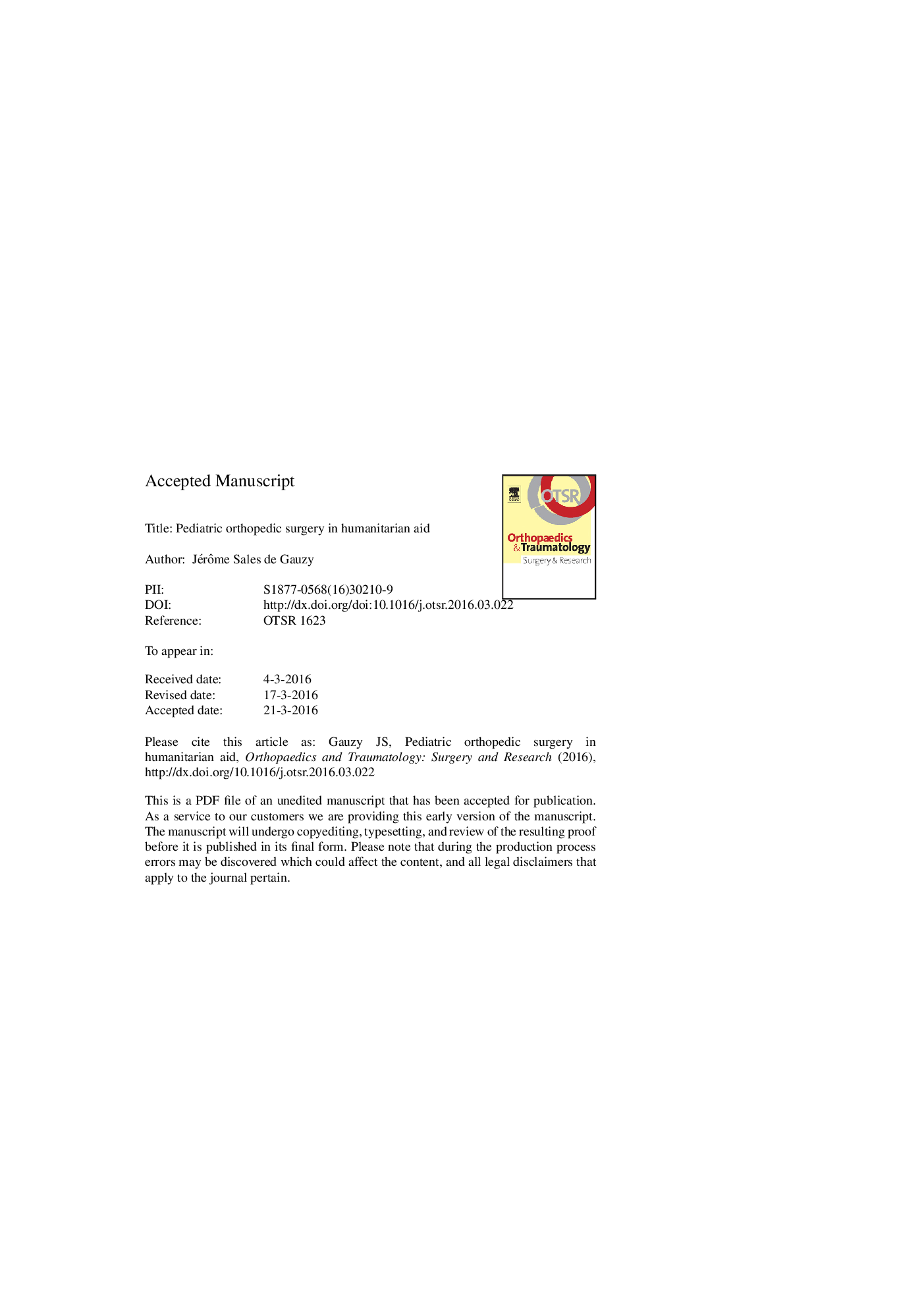| Article ID | Journal | Published Year | Pages | File Type |
|---|---|---|---|---|
| 5711191 | Orthopaedics & Traumatology: Surgery & Research | 2017 | 41 Pages |
Abstract
Pediatric orthopedic surgery in humanitarian aid is conducted mainly in cooperation with emerging countries. Each mission is different, and depends on numerous parameters such as the country, the frequency of such missions, the pathologies encountered, the local structure and team, and the non-governmental organization (NGO) involved. Pathologies vary in etiology (tuberculosis, poliomyelitis) and severity. Each mission requires the presence of an experienced surgeon. Working conditions are often rudimentary. Surgical indications should be restricted to procedures that are going to be effective, with minimal postoperative complications, without any surgical “acrobatics”. Teaching should be in association with the local university, and adapted to local needs. Mission objectives need to be realistic. Surgical indications should be adapted to local conditions, and the surgeon needs to be able to say “no” to procedures involving undue risk. The surgeon on mission should cooperate with local teams and be able to adapt to unusual situations. Assessment of results is essential to improving efficacy and evaluating the success of the mission.
Related Topics
Health Sciences
Medicine and Dentistry
Orthopedics, Sports Medicine and Rehabilitation
Authors
J. Sales de Gauzy, J.-F. Trinchero, J.-L. Jouve,
